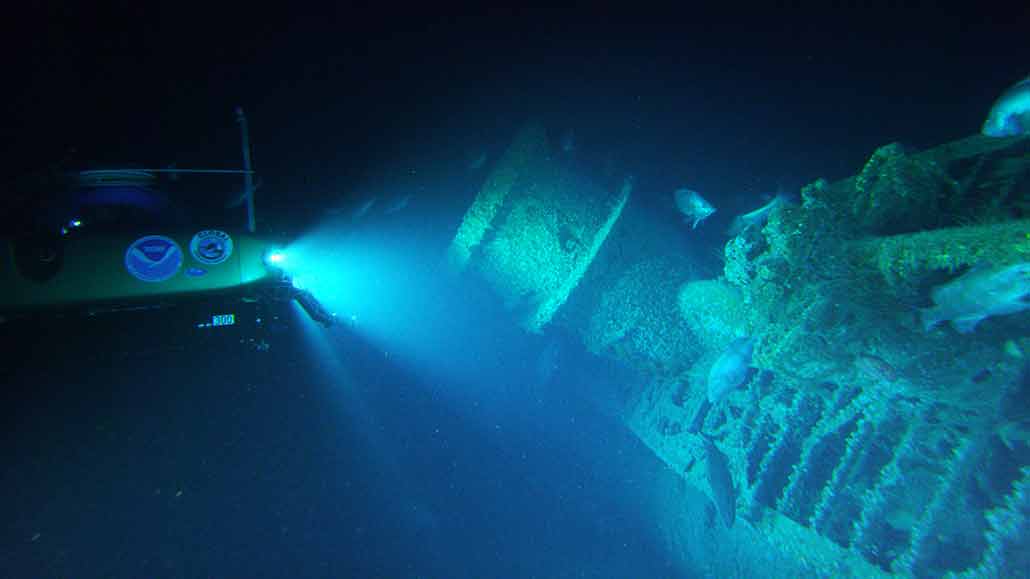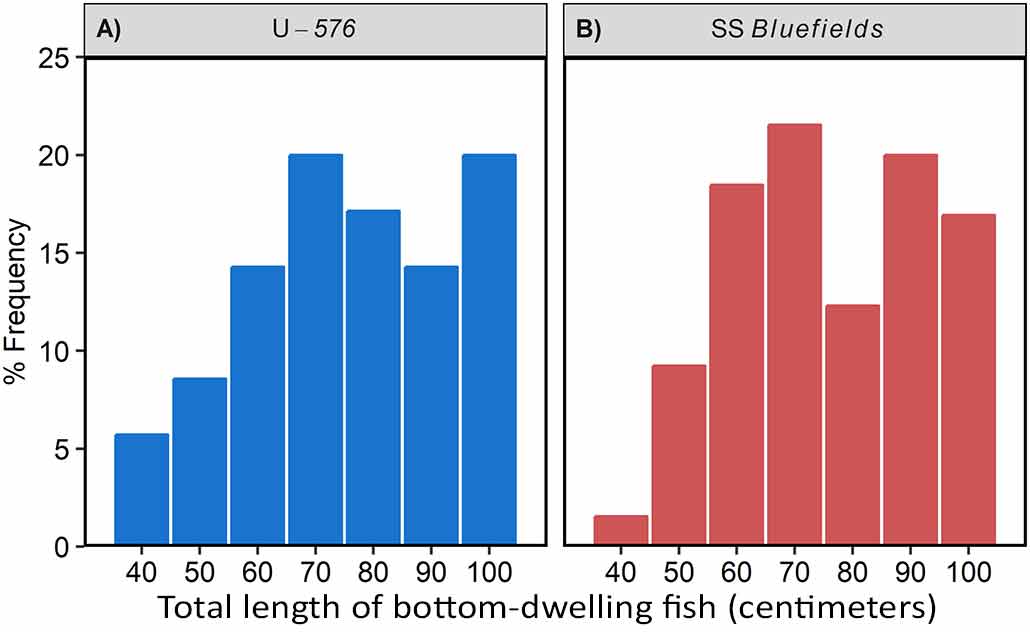Analyze This: Shipwrecks provide a home for bottom-dwelling fish
Fish have found a habitat in two wrecks that haven’t been seen for nearly 80 years

Two isolated wrecks from WWII, including this German U-boat, or submarine, came to rest on a sandy part of the seafloor. Video and laser scans taken by a submersible show that this wreck — and a nearby sunken freighter — are now populated by many fish.
J. McCord/CSI
Lost to the sea, sunken ships and submarines can create new habitats in the deep. Two such vessels that sunk during World War II now host a variety of fishes, a new study finds.
On July 15, 1942, the German submarine U-576 torpedoed a Nicaraguan merchant ship named the SS Bluefields. The Bluefields sank, as did U-576, which had been damaged in the battle. The two wrecks rest just 241 meters (791 feet) apart on the seafloor off the coast of North Carolina.
It’s an unusual underwater battlefield, says Avery Paxton. She’s a marine ecologist at the National Oceanic and Atmospheric Administration (NOAA) in Beaufort, N.C. “We have the victim and its aggressor that have sunk side by side.” People often think of shipwrecks like these as time capsules, she says. But they also provide homes for marine life.
To find fish living on the wrecks, Paxton and her colleagues teamed up with archaeologists. Those scientists study items from the past to learn how humans once lived. An archaeologist roving around in a submersible was the first to lay eyes on the vessels in nearly 80 years.
The submersible captured video of the wrecks. The scientists studied that footage, which showed fish behaviors, such as resting or swimming. The footage also allowed the team to identify species. The team also used a technique called laser-line scanning. That method shines laser beams on objects. The light reflected back creates an image. This technique provided information on fish sizes.
On some areas of the vessels, the team found hundreds of small fish and dozens of larger fish. The scientists observed several species of bottom-dwelling fish. Some were larges one, such as wreckfish or groupers up to a meter (3.3 feet) long. “A lot of those large-bodied fish concentrated around the tall structures on the shipwrecks,” Paxton adds. On U-576, for example, fish clustered around the deck gun. The team shared its findings November 16 in Ecosphere.
That these “relatively small habitats can hold this many fish was just a great surprise,” says Chris Taylor. Part of the research team, Taylor works as an ecologist at NOAA in Beaufort. These isolated wrecks are deep, around 200 meters (660 feet) below the surface and far from other structures, he says. “They’re basically like oases — these islands in the middle of a desert of sand.”
The new finding raises questions about how fish discover such isolated habitats and how they find food, Taylor says. But the scientists also wonder how common such an abundance of fish is on other wrecks. The team is looking at more than 50 years of data to figure this out. There are hundreds of shipwrecks scattered up and down America’s eastern coastline, Taylor notes. And there are many more around the world.
Size of fish on the shipwrecks
Scientists used a method called laser-line scanning to help count and measure sizes of fish on two shipwrecks from the WWII era. The researchers plotted the data, gathered for a slice of each wreck, on a histogram. Histograms are bar charts that show how data are distributed across a range of values. This one shows the percent of bottom-dwelling fish from each wreck that are roughly a certain length.

Data dive:
- What are the most common fish sizes on the U-576 submarine and the SS Bluefields?
- How do the sizes of fish observed on each wreck compare with each other? What might account for differences between the two ships? (You can learn more about U-576 and SS Bluefields from NOAA.)
- How could you estimate the average size of fish on each wreck?
- How might this graph look different if the data were grouped in lengths 5 centimeters apart, instead of 10 cm?
- What are two other ways you might present this data?







